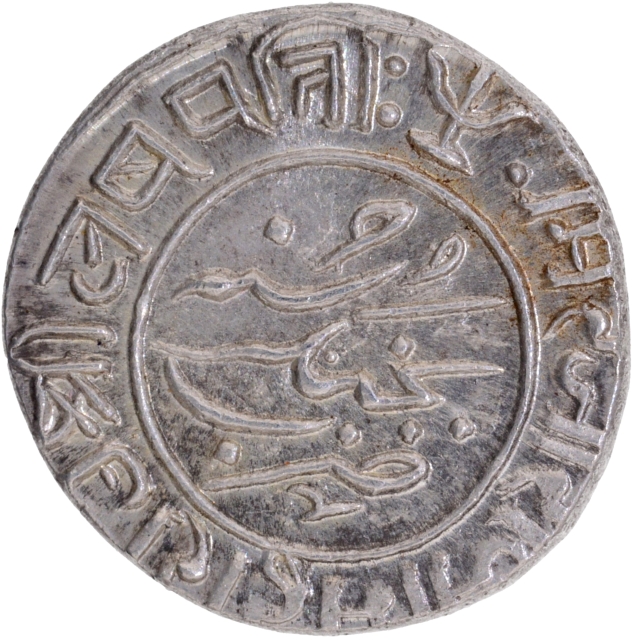This Lot is closed.
- P-Auction # 36
- Views:399
| Start Price 400000 | Estimated Price 400000-500000 |
| login, to view Hammer value | |
| Quick Description | ||||
|---|---|---|---|---|
| Denomination | Rupee 1/2 | Mint | Bhuj | |
| Metal | Silver | Year (AH/VS/SE/AM) | AH 1169 | |
| RY (Ruling Year) | 9 | |||
| Full Description: Kutch State, Lakhpatji (AH 1165-1175/1752-1761 AD), Bhujnagar Mint, Silver ½ Rupee, AH 1169/9 RY, In the name of Ahmad Shah Durrani, Obv: Persian legend “Hukm shud Qadar az bechun ba-Ahmad Badshah / Sikka zad bar Seem wa zar az Awj Mahi ta ba-Mah”with date 1169,Rev: Persian legend “zarb Bhujnagar sanah 9” within a circle, Devanagari legend “Miraja Raja Maharau Shri Lakhpati”around, separated by a trident,5.64g, 20.18mm, (Rajor # 10.1) luster UNC, Exceedingly Rare. Note: Kutch, an erstwhile princely state in India is the largest district of the state of Gujarat. Deshalji I was succeeded by his son Lakhpatji. The reign of Lakhpatji I is often considered to be glorious in the North despite the ambitions of the Marathas, the Rohillas, and the courtiers of the Mughal court all clashing to result in an otherwise turbulent period. A key player in this was Ahmad Shah Durrani, the Afghan ruler who desired to recover his claim on the Mughal subahs of Kashmir, Sindh, and Punjab. His expedition to upper Sindh in 1752 had already sounded alarm bells in Kutch. Probably as a measure to pacify the highly feared Shah, Lakhpatji resorted to striking coins in his name, thereby nominally acknowledging his sovereignty. It is interesting to note that the date on these ceremonial coins is AH1169, which is a year before Ahmad Shah’s 4th invasion of India during which he occupied Delhi and staged a massacre at Mathura. Perhaps, Lakhpatji was being very cautious about the Shah’s intentions, which is a rare instance of political sagaciousness shown by a weak but prosperous ruler to save his skin in view of an impending crisis.
| ||||









